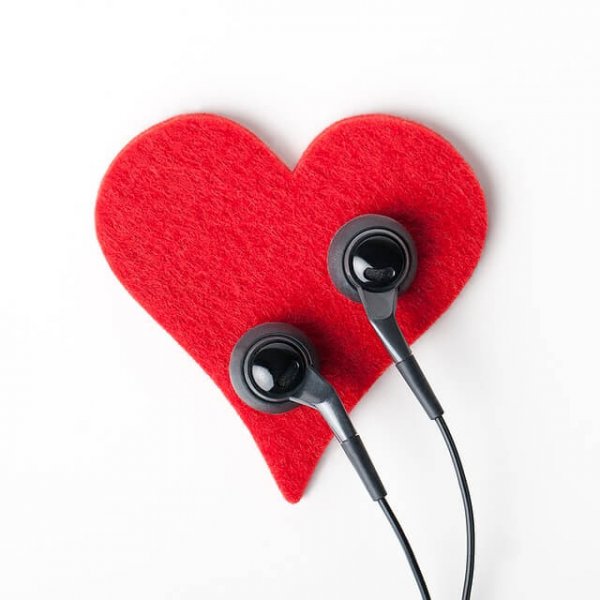What Active Listening Means for Relationships

Do you know how to listen to people? Or do you just hear the words coming out of their mouth, missing the real meaning? Active listening is imperative for good interpersonal communication.
There are many definitions of active listening. Though they differ in some ways, they all agree that it is the ability to listen with two main ingredients: comprehension and care. These two characteristics make up the foundation of active listening.
When you practice active listening, a large part of your energy goes towards trying to understand the speaker’s message. In addition, we give information back to the speaker about whether we understand what they’re trying to communicate. It means, then, to be psychologically available and attentive to the speaker’s message.
The opposite of active listening is distracted listening. That’s when you are physically present, but your mind is elsewhere. You mentally prioritize things other than what the person in front of you is sharing.
As a result, you’re showing that you don’t value what they’re trying to say. This negatively affects your ability to understand their message. But active listening helps you empathize and understand other people’s emotions.

Our communication problems in today’s world are, in large part, due to the fact that we don’t know how to listen. We are constantly thinking about our own opinions. Our main goal is to let the other person know our point of view on what they’re saying.
When that’s the case, the essence of communication is lost. Many of us hold the mistaken belief that listening is automatic. But that is not the case. Listening takes more effort than talking.
“If you wish to be wise, learn to ask reasonable questions, listen with attention, calmly respond, and stay quiet when you have nothing to say.”
-Johann Kaspar Lavater-
If you really want to listen to others, read between the lines
We give a lot of importance to verbal communication. In spite of that, between 60% and 80% of our communication with others is non-verbal. Consequently, for communication to be effective, there has to be coherence between speech and non-verbal expression. There is a parallel when it comes to active listening: it’s just as important to listen as it is to make sure they feel like we are.
Active listening means listening and understanding from the speaker’s perspective. We’re talking about the ability to understand their feelings, ideas, and thoughts. Furthermore, understanding another person takes a certain amount of empathy. You have to be able to put yourself in the their shoes.

Non-verbal language affects how we act and react, both to ourselves and to others. Listening to the message behind the words means understanding and interpreting what you see and hear. Comprehension doesn’t mean you have to agree with everything the other person says. Yet it does mean that you have to listen with apparent interest.
“When someone listens to us, it produces unlimited pleasure in the brain, similar to food or money.”
-Adelina Ruano-
Active listening is the best remedy for loneliness
Most people prefer speaking to listening. When we talk about ourselves, we activate areas of the brain related to pleasure. Hence, it is logical that we prefer to listen to ourselves than to other people.
Dale Carnegie wrote a book that more people read in the U.S. than the Bible. The title was How to Win Friends and Influence People. Nearly the whole country took advantage of his philosophy and methods to improve their relationships.
Carnegie focused on the trust that active listening creates. That trust has a positive influence on personal relationships. Trust also helps us form new relationships and strengthen already existing ones.

Actively listening gives you the opportunity to create bonds based on mutual understanding. Forget what you’re doing; truly listen to the other person. Even if what they’re telling you seems wrong or irrelevant. If you listen that way, it allows them to express themselves exactly how they want to.
When you listen attentively, without interrupting, the speaker feels relaxed. They’re able to express themselves to you and reveal their true feelings.
In conclusion, sometimes you have the power to help other people without lifting a finger. Most of the time, however, you aren’t aware of it. First of all, the gift of knowing how to listen helps you understand people better. Also, it makes other people feel more connected to you and improves your relationships. You could say that what you give will come back to you…
“When a friend asks for advice, it’s not actually your advice he wants. He wants to vent, and to be listened to. For him, that’s like getting the best advice.”
Bibliography
Contreras, M. M., & San Rafael, C. Aprender a escuchar.
Gómez, Á. H., Gómez, J. I. A., & Rodríguez, M. A. P. (2011). Técnicas de comunicación creativas en el aula: escucha activa, el arte de la pregunta, la gestión de los silencios. Educación y Futuro: Revista de investigación aplicada y experiencias educativas, (24), 153-180.
Martín-Barbero, J. (1978). Comunicación masiva: discurso y poder (No. 04; HM258, M37.). Quito: Ciespal.
Subiela García, J. A., Abellón Ruiz, J., Celdrán Baños, A. I., Manzanares Lázaro, J. Á., & Satorres Ramis, B. (2014). La importancia de la Escucha Activa en la intervención Enfermera. Enfermería Global, 13(34), 276-292.
Torres, M. E. (2005). Asertividad y escucha activa en el ámbito académico.
Do you know how to listen to people? Or do you just hear the words coming out of their mouth, missing the real meaning? Active listening is imperative for good interpersonal communication.
There are many definitions of active listening. Though they differ in some ways, they all agree that it is the ability to listen with two main ingredients: comprehension and care. These two characteristics make up the foundation of active listening.
When you practice active listening, a large part of your energy goes towards trying to understand the speaker’s message. In addition, we give information back to the speaker about whether we understand what they’re trying to communicate. It means, then, to be psychologically available and attentive to the speaker’s message.
The opposite of active listening is distracted listening. That’s when you are physically present, but your mind is elsewhere. You mentally prioritize things other than what the person in front of you is sharing.
As a result, you’re showing that you don’t value what they’re trying to say. This negatively affects your ability to understand their message. But active listening helps you empathize and understand other people’s emotions.

Our communication problems in today’s world are, in large part, due to the fact that we don’t know how to listen. We are constantly thinking about our own opinions. Our main goal is to let the other person know our point of view on what they’re saying.
When that’s the case, the essence of communication is lost. Many of us hold the mistaken belief that listening is automatic. But that is not the case. Listening takes more effort than talking.
“If you wish to be wise, learn to ask reasonable questions, listen with attention, calmly respond, and stay quiet when you have nothing to say.”
-Johann Kaspar Lavater-
If you really want to listen to others, read between the lines
We give a lot of importance to verbal communication. In spite of that, between 60% and 80% of our communication with others is non-verbal. Consequently, for communication to be effective, there has to be coherence between speech and non-verbal expression. There is a parallel when it comes to active listening: it’s just as important to listen as it is to make sure they feel like we are.
Active listening means listening and understanding from the speaker’s perspective. We’re talking about the ability to understand their feelings, ideas, and thoughts. Furthermore, understanding another person takes a certain amount of empathy. You have to be able to put yourself in the their shoes.

Non-verbal language affects how we act and react, both to ourselves and to others. Listening to the message behind the words means understanding and interpreting what you see and hear. Comprehension doesn’t mean you have to agree with everything the other person says. Yet it does mean that you have to listen with apparent interest.
“When someone listens to us, it produces unlimited pleasure in the brain, similar to food or money.”
-Adelina Ruano-
Active listening is the best remedy for loneliness
Most people prefer speaking to listening. When we talk about ourselves, we activate areas of the brain related to pleasure. Hence, it is logical that we prefer to listen to ourselves than to other people.
Dale Carnegie wrote a book that more people read in the U.S. than the Bible. The title was How to Win Friends and Influence People. Nearly the whole country took advantage of his philosophy and methods to improve their relationships.
Carnegie focused on the trust that active listening creates. That trust has a positive influence on personal relationships. Trust also helps us form new relationships and strengthen already existing ones.

Actively listening gives you the opportunity to create bonds based on mutual understanding. Forget what you’re doing; truly listen to the other person. Even if what they’re telling you seems wrong or irrelevant. If you listen that way, it allows them to express themselves exactly how they want to.
When you listen attentively, without interrupting, the speaker feels relaxed. They’re able to express themselves to you and reveal their true feelings.
In conclusion, sometimes you have the power to help other people without lifting a finger. Most of the time, however, you aren’t aware of it. First of all, the gift of knowing how to listen helps you understand people better. Also, it makes other people feel more connected to you and improves your relationships. You could say that what you give will come back to you…
“When a friend asks for advice, it’s not actually your advice he wants. He wants to vent, and to be listened to. For him, that’s like getting the best advice.”
Bibliography
Contreras, M. M., & San Rafael, C. Aprender a escuchar.
Gómez, Á. H., Gómez, J. I. A., & Rodríguez, M. A. P. (2011). Técnicas de comunicación creativas en el aula: escucha activa, el arte de la pregunta, la gestión de los silencios. Educación y Futuro: Revista de investigación aplicada y experiencias educativas, (24), 153-180.
Martín-Barbero, J. (1978). Comunicación masiva: discurso y poder (No. 04; HM258, M37.). Quito: Ciespal.
Subiela García, J. A., Abellón Ruiz, J., Celdrán Baños, A. I., Manzanares Lázaro, J. Á., & Satorres Ramis, B. (2014). La importancia de la Escucha Activa en la intervención Enfermera. Enfermería Global, 13(34), 276-292.
Torres, M. E. (2005). Asertividad y escucha activa en el ámbito académico.
This text is provided for informational purposes only and does not replace consultation with a professional. If in doubt, consult your specialist.







